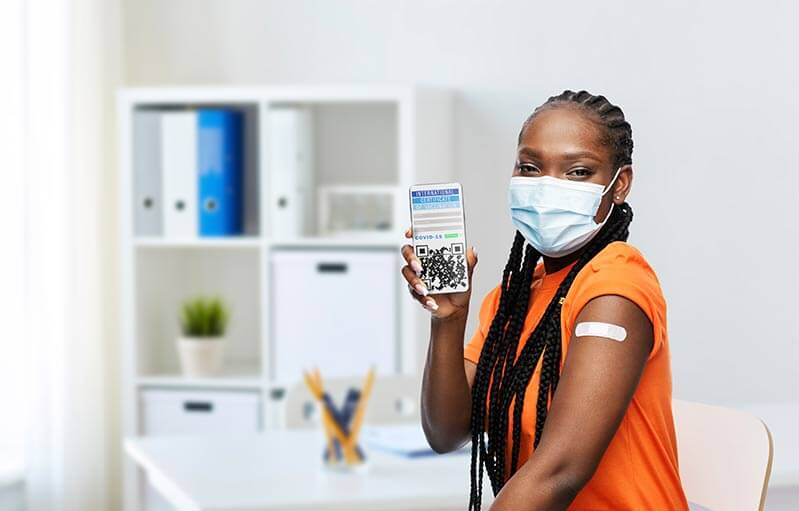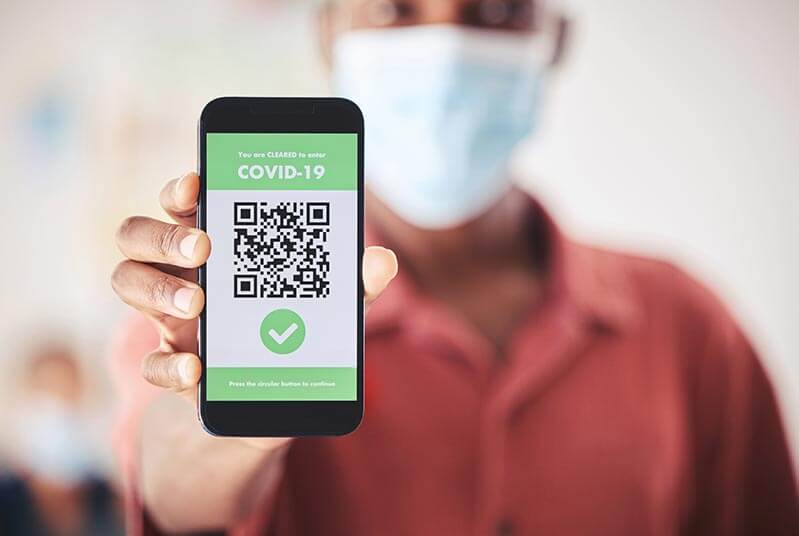ABPI Leads the Way: The Application and Prospects of QR Code Technology in Healthcare
As the digitization of the healthcare industry accelerates, the application of QR code technology is becoming increasingly widespread. This article explores the practical applications and future prospects of QR codes in healthcare information management, set against the backdrop of the recent regulations released by the Association of the British Pharmaceutical Industry (ABPI). These new regulations allow pharmaceutical companies to use QR codes on printed materials, enabling healthcare professionals and patients to quickly access prescription information. This innovation not only enhances the efficiency and accuracy of information retrieval but also improves the safety of medical services and patient satisfaction. Through case studies from Japan, the United States, and China, this article demonstrates the multiple applications of QR code technology in drug information, medical records management, and public health management. Looking ahead, QR code technology is expected to play a greater role in advancing healthcare digitization, bringing more innovation and transformation to the industry.
What Are QR Codes?
QR codes, short for Quick Response codes, are a type of graphical encoding technology that can quickly identify and read information. Invented by Denso Wave in Japan in 1994, QR codes consist of black-and-white square patterns that encode various types of information in a specific arrangement. By scanning the code with a smartphone or QR code scanner, the encoded information is rapidly decoded into practical data such as text, URLs, or phone numbers.
The application of QR codes is already extensive. They can be used for quick payments while shopping, to view menus and prices in restaurants, and to access historical and cultural information at tourist sites. Especially during the pandemic, QR codes have been used in health code systems to display health statuses and effectively control the spread of the virus.
Why Does the Healthcare Industry Need QR Codes?

The healthcare industry faces significant challenges in information retrieval and management, and the introduction of QR code technology is bringing substantial changes to this field. Traditional methods of medical record-keeping rely on paper documents and handwritten notes, which are error-prone and difficult to search. This not only affects medical efficiency but can also lead to diagnostic errors. As digitization accelerates, the healthcare industry urgently needs an efficient and accurate way to manage information.
QR code technology, with its simplicity and speed, is becoming an ideal tool for healthcare information management. By encoding important data such as medical records, prescription information, and test reports into QR codes, healthcare professionals can quickly access a patient's complete medical history and medication information, significantly improving work efficiency. For example, a study showed that healthcare institutions implementing QR code technology saw nearly a 40% increase in efficiency in information retrieval and processing (Statista, 2023).
In recent years, the application of QR codes in pandemic management has further proven their value. Health code systems use QR codes to record and display personal health statuses and travel histories, providing public health departments with a powerful tool to track and control the spread of the virus. This application not only improves the efficiency of public health management but also enhances public safety and convenience.
Of course, the application of QR code technology in drug management is equally significant. Many pharmaceutical companies have started printing QR codes on drug packaging, allowing patients to access detailed drug instructions, usage methods, and precautions by scanning the codes. This method effectively reduces the risk of misuse or side effects caused by unclear drug information. According to a market survey, 57% of consumers have scanned QR codes on food or drug packaging to obtain more information (Statista, 2023).
What Are the New ABPI Regulations?
The ABPI (Association of the British Pharmaceutical Industry) recently released a series of new regulations aimed at modernizing and simplifying the way medical information is accessed, particularly by introducing QR code technology to access prescription information. The core of this change is to allow the use of QR codes on printed materials so that healthcare professionals and patients can quickly access the latest drug information by scanning the codes.
Key Points of the New ABPI Regulations
QR Code Access to Prescription Information:
The new regulations clearly state that pharmaceutical companies can add QR codes to their product's printed materials, enabling healthcare professionals and patients to directly access prescription information by scanning the codes. This initiative aims to enhance the accessibility and accuracy of information, reducing the risks of manual search and misinterpretation.Information Update and Real-Time Access:
Through QR codes, pharmaceutical companies can ensure that the information accessed by healthcare professionals and patients is always up-to-date. Traditional printed materials have low update frequencies and can easily become outdated, while QR codes can link to real-time online databases, ensuring the timeliness and accuracy of information.Convenience and Efficiency:
The use of QR code technology greatly simplifies the process of information retrieval. Healthcare professionals only need to scan a QR code to obtain the required information, eliminating the need to sift through large volumes of paper documents or computer systems. For patients, this also enhances the safety and convenience of medication, reducing the risks of misuse or misunderstanding due to unclear information.
Implementation Background and Significance
The new ABPI regulations are not baseless but are based on the current needs and trends of the healthcare industry's digital transformation. With the development of information technology, healthcare information management is undergoing significant changes. According to Statista, the digitization process of the global healthcare industry has accelerated significantly in recent years, with more and more healthcare institutions adopting QR code technology to manage information. This not only improves work efficiency but also significantly reduces the occurrence of errors.
During the pandemic, the application of QR codes further demonstrated their value. Health code systems use QR codes to record and display personal health statuses and travel histories, providing public health departments with a powerful tool to track and control the spread of the virus. This successful experience has further promoted the application of QR codes in healthcare information management.
Industry Response and Future Prospects
The new ABPI regulations have received positive responses both within and outside the healthcare industry. Healthcare professionals believe that the introduction of QR code technology greatly enhances the efficiency and accuracy of information retrieval. For pharmaceutical companies, these regulations provide an efficient way to communicate information, better serving healthcare professionals and patients.
As QR code technology continues to be promoted and popularized, it is expected that more healthcare institutions and pharmaceutical companies will adopt this technology, driving deeper digital transformation in healthcare information management. The application prospects of QR codes in the healthcare industry are broad, not only improving information management but also bringing a better medical service experience to patients.
Through these new regulations, the ABPI has demonstrated its foresight and leadership in promoting the modernization and informatization of the healthcare industry, setting a new benchmark for the global healthcare sector.
Practical Applications of QR Codes in Healthcare

Japan’s QR Code Drug Information System
In Japan, many pharmaceutical companies print QR codes on drug packaging, allowing patients to access detailed drug instructions, usage methods, and precautions by scanning the codes. For example, Otsuka Pharmaceutical in Japan has added QR codes to all its drug packaging, enabling patients to view detailed drug information, video guides, and FAQs. This method effectively reduces the risk of misuse or side effects caused by unclear drug information.
Medical Record Management in U.S. Hospitals
Johns Hopkins Hospital in the United States has introduced QR code technology to manage patients' electronic medical records. Each patient receives a wristband with a QR code upon admission. By scanning the QR code, healthcare professionals can quickly access the patient's medical history, allergy records, and current treatment plans. This not only improves the efficiency of healthcare professionals but also significantly reduces human errors. According to internal hospital data, the introduction of QR code technology reduced medication errors by 35% and increased patient satisfaction by 20%.
China’s Health Code System
During the pandemic, China launched a health code system that uses QR codes to record and display personal health statuses and travel histories. This system is widely used nationwide and effectively helps public health departments track and manage the pandemic. According to Chinese government statistics, by the end of 2021, over one billion people had used the health code system, significantly improving the efficiency of pandemic prevention and control.
Benefits of QR Codes in Healthcare
Enhancing Efficiency
QR code technology significantly improves the efficiency of healthcare information retrieval and processing. Traditional handwritten records and paper documents are difficult to search and time-consuming and error-prone. QR codes can encode large amounts of information into a small square, which can be quickly read by scanning. This efficient and convenient method significantly reduces the time healthcare professionals spend searching and processing information. For example, after implementing QR code technology, Johns Hopkins Hospital saw a 35% reduction in medication errors and a 20% increase in patient satisfaction.
Improving Safety
QR code technology plays an important role in ensuring information accuracy and safety. Traditional handwritten records and paper documents are prone to tampering or misreading, while QR codes store and transmit information digitally, effectively reducing the risk of human error and information tampering. For example, QR codes on drug packaging ensure that patients access the latest, most accurate drug information and instructions, reducing the risk of misuse or side effects due to unclear information.
Enhancing Patient Experience
QR codes allow patients to access medical and drug information more conveniently, enhancing the user experience of healthcare services. Patients only need to scan a QR code to obtain detailed drug instructions, usage methods, and precautions, simplifying the information retrieval process and improving medication safety and convenience. According to Statista, 57% of consumers have scanned QR codes on food or drug packaging to obtain more information.
Supporting Public Health Management
During the pandemic, the application of QR codes in public health management further demonstrated their value. Health code systems use QR codes to record and display personal health statuses and travel histories, providing public health departments with a powerful tool to track and control the spread of the virus. This system not only improves the efficiency of public health management but also enhances public safety and convenience.
Real-Time Updates and Information Synchronization
QR codes can link to real-time online databases, ensuring that healthcare professionals and patients always access the latest information. This feature is particularly important in a rapidly changing healthcare environment, helping healthcare professionals stay updated with
the latest medical guidelines and drug information, thereby improving the quality and effectiveness of medical services. For example, after the implementation of the new ABPI regulations, pharmaceutical companies can use QR codes to provide real-time updates on drug information, ensuring the timeliness and accuracy of the information.
Reducing Environmental Impact
The digital nature of QR codes reduces the reliance on paper documents, helping to lower the environmental impact of the healthcare industry. Through QR codes, much information can be accessed directly online without the need for printing large volumes of paper materials. This not only saves resources but also reduces waste, contributing to environmental protection.
